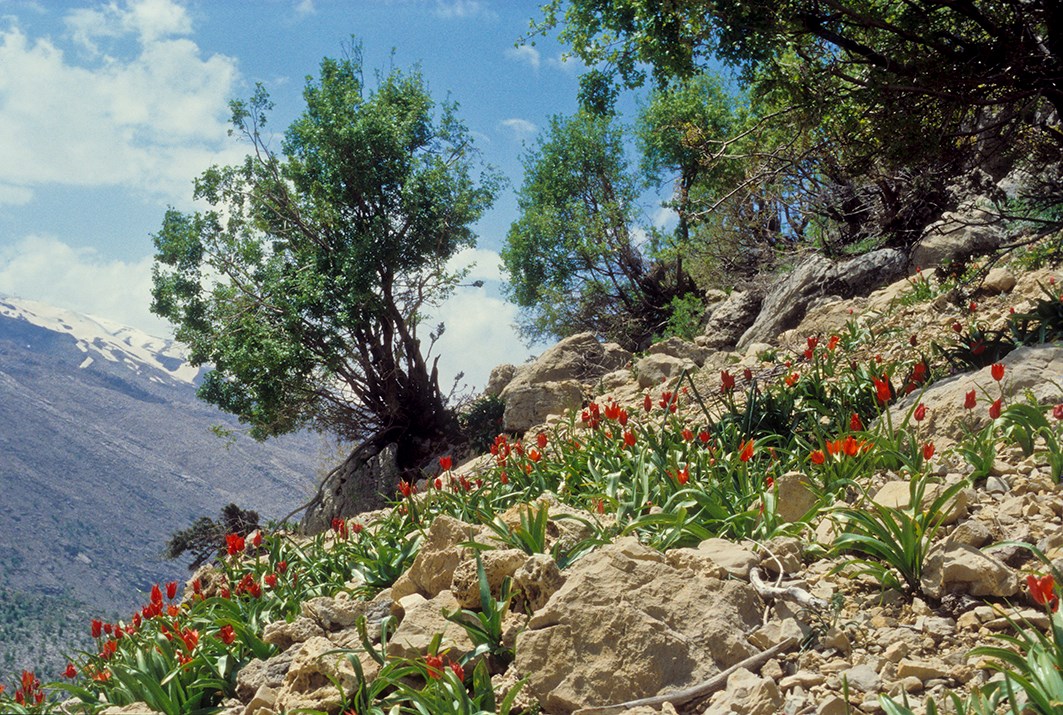Distribution and climate

Bulbs and tubers are mainly found in regions with a Mediterranean climate or a temperate steppe climate, between latitudes 30° to 40° north and south respectively of the equator. Regions particularly rich in geophytes are: 1) a belt from the Mediterranean via Turkey to Central Asia; 2) California and Oregon in western North America and 3) the Cape Province in South Africa. Most of our garden bulbs originate from the Euro-Asian ”bulb belt”.
Tulips (Tulipa), fritillaries (Fritillaria), spring irises (Iris reticulata) and hyacinths (Hyacinthus) are distinctive steppe plants needing a long warm rest.
Another group of geophytes, e.g. scillas (Scilla), Forbes' glory-of-the-snow (Scilla forbesii), spring crocus (Crocus vernus), striped squill and grape hyacinth (Puschkinia scilloides and Muscari botryoides), originate from mountain meadows in regions with a Mediterranean climate. There the summers are shorter and wetter. Geophytes from these regions are often well-suited to the Swedish climate and they adapt happily to growing wild.
Finally, there is a large group of geophytes that originate in woodland environments, like Corydalis (Corydalis), wakerobin or tri flower (Trillium), white anemone (Anemone nemorosa) and dog's-tooth violet or adder's tongue (Erythronium). That type of environment exists in most regions with a temperate climate. In woodland environments, geophytes' strategy of rapid spring development before the trees have got their leaves is very effective. Here it is also mainly the lack of light and not of water that is the reason for their resting period during the shady gloom of summer tree foliage.
Sweden's climate does not suit geophytes at all well. On stony and gravelly soils and in thin, summer-dry soils like limestone we can find meadow saxifrage (Saxifraga granulata), chives (Allium schoenoprasum) and pheasant's eye or false hellebore (Adonis vernalis). Fertile woodlands have a richer geophyte flora with for example Corydalis (Corydalis), anemones (Anemone), lesser celandines or pilewort (Ficaria verna), five-faced bishop or townhall clock (Adoxa moschatellina), spring onion (Gagea lutea) och wild garlic (Allium ursinum). Narcissus (Narcissus pseudonarcissus), crocus (Crocus), Forbes' glory-of-the-snow (Scilla forbesii), and many more are often found as "garden refugees".






